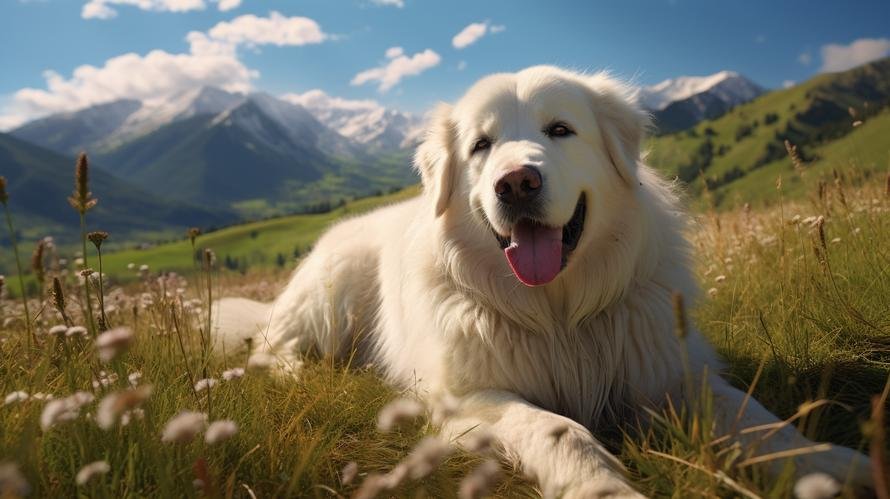Imagine gazing into the soft, inquisitive eyes of a teddy bear-like creature that towers a good foot and a half above your knees, with a coat as white as fresh snow. That’s the Great Pyrenees for you, a majestic breed that originated from the Pyrenees Mountains straddling France and Spain.
Nevertheless, this breed’s large size and daunting presence often raise the question: is a Great Pyrenees a dangerous dog?
While that may be an odd thought considering their adorable teddy bear-like appearance, it is a natural concern considering their natural roles as livestock guardians back in the day. Understanding the character traits, temperament, and needs of these dogs is the key to addressing this question.
Before we dive in, here’s a surprising fact: unlike many other canine breeds, the Great Pyrenees were not bred to be a pet or human companion. Surprising, right? They were actually bred to deter predators such as wolves and bears from messing around with shepherds’ flocks in the rugged Pyrenees Mountains.
This guarding instinct is still prevalent in the Great Pyrenees’s DNA. However, it does not signify that they’re dangerous dogs by default. In fact, they are often described as gentle giants, exhibiting great gentleness towards their families and other pets. But, they still maintain an instinctive wariness of strangers, owing to their guarding legacy.
A typical Great Pyrenees is calm, well mannered, and slightly aloof. They tend to be particularly patient and protective of children, making them excellent family dogs. Their innate guardian instincts mean they are fiercely protective of their family members and territory, which can be both a pro and a con.
Remember this, a well trained, well socialized Great Pyrenees is a joy to be around. They might be protective but are by no means aggressive without provocation. Hence it is essential to train them as puppies to grow into well-adjusted, familiarised adults capable of differentiating between friends versus foes.
One of the traits nobody tells you about: They are trash-talking drama queens! When a Great Pyrenees senses something suspicious, they tend to bark, growl, or exhibit similar warning behaviors. This, rather than being aggressive, is more of a psychological strategy to scare off potential intruders. They make a lot of noise aimed at scaring away the threat rather than engaging directly.
Are they dangerous? With their size and strength, they certainly could be, but they really aren’t. It’s important to reiterate here that while Great Pyrenees are protective, it’s in their nature to be more of a defender than an attacker. They’re not the type who would “strike first.”
But what happens if a Great Pyrenees does become violent? On those very rare occasions, it’s usually due to improper or lack of training, mistreatment, misunderstanding, sudden surprises, or health issues like pain or discomfort causing irritability.
Now that we have addressed the primary concerns, here’s your essential takeaway: as a prospective or new Great Pyrenees owner, understanding their behavior is crucial. A well educated, responsible owner can shape their behavior and direct their guarding instinct in a positive way. Early socialization, consistent training, and teaching them well-defined rules to follow can help manage their inclination towards being reserved with strangers.
Love them unconditionally, expose them to different people and environments as a pup, establish a clear leadership role and, in turn, you will have a pet that is exceptionally loyal, protective, and one of the most loving and cuddly family dogs you’ll ever have.
In conclusion, a Great Pyrenees isn’t any more dangerous than other dog breeds. Yes, they have their quirks like any other breed. But with the right guidance and care, they are just fluffy, loveable giants! Remember, behind that large and imposing figure is a dog that merely wants to protect, love its family and, of course, enjoy a good belly rub!



